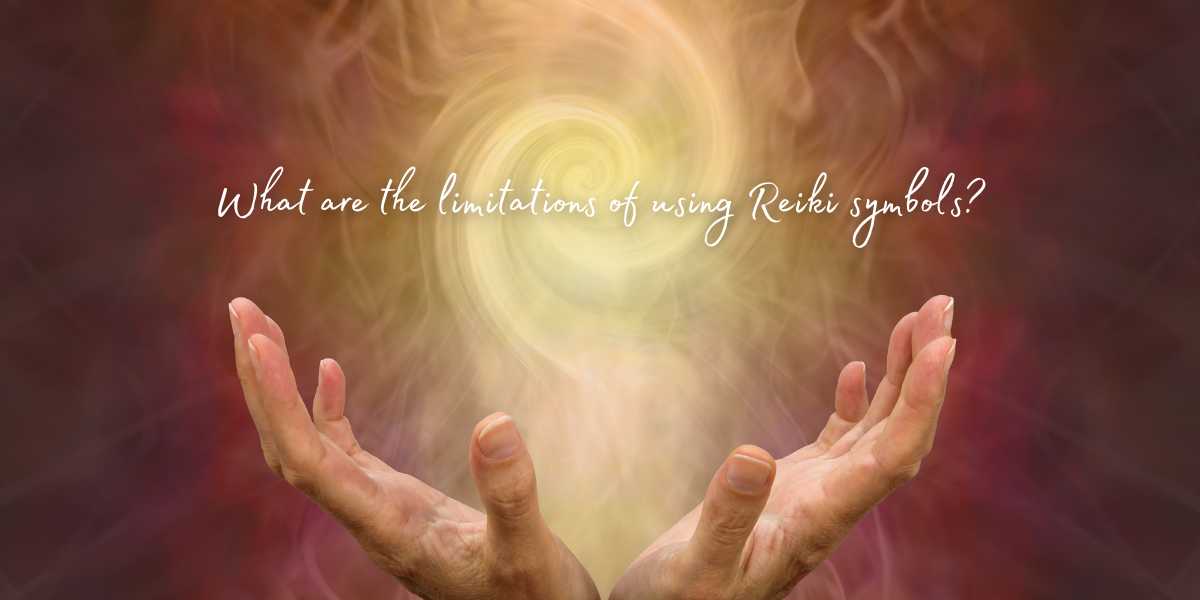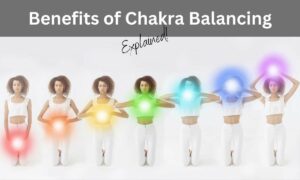When using Reiki symbols, there are a few limitations to consider. These include:
- Cultural specificity: Reiki symbols are rooted in Japanese culture, so they may not resonate with individuals from different cultural backgrounds.
- Personal interpretation: The meaning and effectiveness of Reiki symbols can vary depending on the practitioner’s interpretation and intention.
- Dependency on symbols: Relying solely on symbols may hinder the development of intuitive healing abilities and personal connection with energy.
- Symbol secrecy: Some Reiki traditions emphasize keeping symbols secret, which limits their accessibility and prevents open discussion.
Understanding these limitations can help individuals make informed decisions when incorporating Reiki symbols into their healing practices.
The Basics of Reiki Symbols
Reiki symbols are sacred shapes or forms that are used by practitioners during sessions to help unlock specific energies beneficial for healing. These symbols have been passed down through generations of Reiki Masters and are believed to hold particular vibrations related to aspects such as physical health, emotional balance, and inner peace.
There are three primary symbols used in traditional Usui Reiki: Cho Ku Rei (the power symbol), Sei He Ki (the mental/emotional symbol), and Hon Sha Ze Sho Nen (the distance healing symbol). Each symbol has its unique meaning and purpose within a session.
Understanding Symbolic Limitations
While the use of Reiki symbols can be beneficial in many ways, it’s crucial to understand their limitations. Practitioners must approach using them with mindfulness so as not to create any harm or misunderstanding during sessions. Firstly, cultural appropriation is an important consideration when it comes to using these sacred shapes.
Some people may see incorporating symbols from cultures other than their own as disrespectful or even harmful – this is something practitioners need to consider carefully before using them in their own practice. Another limitation arises because different practitioners interpret these symbols differently – even if they follow similar traditions or lineages.
This can lead to confusion or miscommunication during sessions, which defeats the purpose of using symbols for enhanced energetic communication. There’s a risk practitioner can become over-reliant on symbols.
Relying too much on the use of symbols can limit their ability to connect with clients and intuitively sense energy imbalances. It’s important to remember that Reiki is much more than just a set of symbols – it’s a holistic practice that requires practitioners to use all their senses to tune into the universal life force energy.
Understanding the limitations of using Reiki symbols is crucial for any practitioner aiming to provide quality healing sessions. By being mindful and intentional about when and how they use these tools, practitioners can enhance their effectiveness in harnessing universal life force energy.

Limitation 1: Cultural Appropriation
Reiki symbols have become increasingly popular in the Western world, and while their use is often well-intentioned, it’s important to recognize the potential for cultural appropriation. These symbols originally come from Japanese spiritual practices, and their inclusion in Reiki was intended as a way of honoring that tradition. However, when symbols are taken out of their cultural context and used by those who haven’t been initiated into the original practice, it can be seen as disrespectful.
Cultural appropriation can have serious consequences. By taking symbols from another culture without fully understanding their meaning or using them in a way that is not respectful to that culture, individuals risk perpetuating stereotypes and reinforcing power imbalances.
The use of Reiki symbols without proper understanding can also lead to misunderstandings about the practice itself. It’s important for practitioners to approach the use of Reiki symbols with sensitivity and respect.
This means taking time to learn about the origin and meaning of each symbol before incorporating it into one’s practice. It also means being mindful of how these symbols are used in sessions with clients, ensuring that they are not being reduced to mere decorative elements or used inappropriately.
While the use of Reiki symbols can be a powerful tool for healing, it’s important to recognize their cultural significance and approach them with mindfulness and respect. By doing so, practitioners can honor the traditions they come from while also creating safe and inclusive spaces for all clients.
The Limitations of Using Reiki Symbols: Lack of Universal Understanding
Reiki practitioners often use symbols to focus their energy and intention during a session. However, the interpretation of these symbols can vary greatly depending on the practitioner. Some may have learned from a different lineage or training program, while others may simply have a different intuitive understanding of what the symbol represents.
This lack of universal understanding can lead to confusion and miscommunication during a session. For example, one Reiki practitioner may view the Cho Ku Rei symbol as representing an increase in power and protection, while another may see it as representing cleansing and purification.
If a client is expecting one interpretation but receives another, they may not receive the intended benefits or feel confused by the experience. This variation in interpretation also extends beyond just the symbols themselves.
Different practitioners may have their own unique approaches to using Reiki symbols or incorporate them into their practice in different ways. Without clear communication between client and practitioner, this can lead to misunderstandings that ultimately hinder the healing process.
Clear Communication is Key
To overcome this limitation, it’s important for Reiki practitioners to clearly communicate with their clients about how they use symbols in their practice. This includes explaining what each symbol represents to them personally and how they intend to use it during the session. Clients should also be encouraged to ask questions if they are unsure about anything related to the practitioner’s use of symbols.
Additionally, practitioners should strive for consistency within their own practice when using Reiki symbols. By having a clear understanding of what each symbol means and how they plan on incorporating them into sessions, there is less room for confusion or miscommunication.
While Reiki symbols can be powerful tools for focusing energy and intention during a session, their interpretation can vary greatly among practitioners. This lack of universal understanding can lead to confusion and miscommunication with clients if not addressed properly through clear communication and consistency within a practitioner’s own practice.
Limitation 3: Over-reliance on SymbolsExplanation on how some practitioners may rely too heavily on the use of symbols
Reiki symbols are an important part of the practice, but they should not be the only tool in a practitioner’s toolbox. Unfortunately, some Reiki practitioners can become overly reliant on using symbols to the point where they forget that Reiki is an energy healing modality that does not require any specific tools or techniques. This over-reliance can lead to a lack of growth and flexibility in their practice.
When a practitioner becomes too focused on using symbols, it can also limit their ability to adapt to different clients and situations. Every person is unique and has different needs, so relying solely on one technique for every client can result in a limited range of healing outcomes. Discussion on how this can limit their ability to connect with clients and intuitively sense energy imbalances
Over-reliance on symbols can also hinder a practitioner’s intuitive abilities. Intuition is a key component of Reiki practice, as it allows practitioners to sense imbalances in a client’s energy field without relying solely on physical symptoms or visual cues.
However, if a practitioner is too focused on using symbols instead of tuning into their intuition, they may miss important information about their client’s energy field. In addition to limiting intuition, over-reliance on symbols can also have an impact on the connection between the practitioner and client.
When a practitioner becomes too focused on using specific techniques instead of being present with their client, it can create a disconnect between them. This disconnection could prevent deeper levels of healing from occurring as there must be mutual trust between both parties for optimal results. How practitioners can avoid over-relying on Symbols?
To avoid over-reliance issues with Reiki Symbols, practitioners need to focus on cultivating a strong connection with their client, tuning into their intuition, and being present with their clients. It is important to understand that symbols are just one tool among many in the Reiki practitioner’s toolbox.
There are no hard-set rules about how often or how little they should be used. Practitioners can also benefit from exploring other energy healing modalities such as sound therapy, chakra balancing, or crystal healing.
This exploration of other techniques can help a practitioner develop a more dynamic approach to Reiki practice and expand the range of outcomes for their clients. Ultimately, a practitioner’s goal should always be to provide the best healing experience possible for every client by being attuned to their individual needs and unique energy field.
Limitation 4: Limited Scope
How Reiki symbols are limited to the practice of Reiki
While Reiki symbols are a powerful tool in the practice of Reiki, it’s important to remember that they have a limited scope. They were specifically created to be used in the context of Reiki, and may not be applicable or effective in other healing modalities.
This means that while Reiki symbols can be incredibly beneficial for certain issues, they may not provide comprehensive solutions for all problems. For example, let’s say a client is experiencing severe back pain.
While using Reiki symbols during a session may provide temporary relief, it’s important for practitioners to recognize that there may be underlying physical or emotional causes for the pain that require more specialized treatment. In this case, recommending additional treatments such as acupuncture or chiropractic care would likely yield better results than relying solely on Reiki symbol usage.
How other healing modalities may offer more comprehensive solutions for certain issues
Other healing modalities such as acupuncture and herbalism have been around for thousands of years and have evolved over time to address specific physical and emotional health issues. When compared to Reiki symbol usage alone, these practices offer a wider range of tools and techniques that can help individuals achieve optimal health and well-being.
For example, many herbal remedies have been scientifically studied and proven effective at reducing inflammation in the body. Similarly, acupuncture has been shown to help manage chronic pain by releasing natural endorphins in the body.
These examples show how other healing modalities can provide targeted solutions based on specific symptoms or needs. While using Reiki symbols can certainly be beneficial in promoting relaxation and overall wellness, it’s important to recognize their limitations within the broader spectrum of healing practices available today.
Practitioners should approach each session with an open mind and a willingness to incorporate other modalities when necessary to better serve their clients. By doing so, they can optimize the healing potential of their practice and offer the most comprehensive solutions for their clients’ needs.
Conclusion
Throughout this article, we have explored some of the limitations of using Reiki symbols in healing sessions. We discussed how cultural appropriation can harm both clients and practitioners, how different interpretations of symbols can lead to miscommunication, how over-reliance on symbols can limit a practitioner’s intuition, and how Reiki symbols have a limited scope compared to other healing modalities. It is important for practitioners to be aware of these limitations and approach symbol usage mindfully.
Despite these limitations, Reiki symbols can still be a powerful tool when used with mindfulness and intentionality. Practitioners should take the time to educate themselves on the historical and cultural significance of each symbol they use.
They should also trust their own intuition when interpreting the symbols in a session, rather than relying solely on memorized meanings. Practitioners should also remember that Reiki symbols are just one aspect of the overall practice.
Connecting with clients through active listening and intuitive sensing is equally important in creating a healing session that meets their unique needs. While Reiki symbols do have their limitations, they can still be an effective tool when used mindfully.
It is up to each practitioner to approach symbol usage with respect for its origins and awareness of its potential shortcomings. By doing so, they will create more meaningful healing sessions for themselves and their clients alike.




